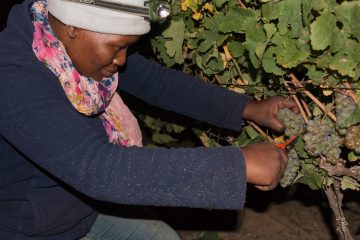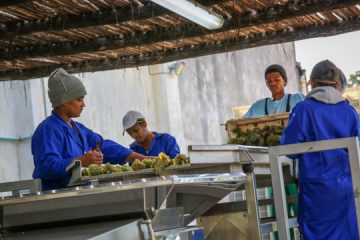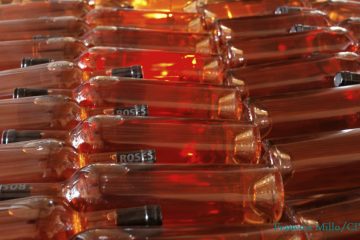This story is continued from "Wine is too cheap: Working Harvest in South Africa (Part 1)" As a tasting exercise during meals, Burger pulled two bottles of wine for me and the assistant winemaker Drew to sample blind and guess the grapes and origin. We could ask four strategic questions
I couldn't remember the last time I climbed a ladder. Living in New York for over a decade, it's just not something I ever have to do. Looking at its narrow frame and spindly rungs, lashed to the top of a seemingly skyscraper-high steel tank by a single, knotted rope,
How do you define a “cool climate” wine region? According to the folk behind this year's International Cool Climate Wine Symposium, the distinguishing characteristic is how much sleep the winemaker gets. Warm climate = easy winemaking (lots of sleep) = bad. Cool climate = difficult winemaking (less sleep) = good.
If there’s one style of wine we can’t get enough of in summer it’s rosé. We love it as a sparkling or still wine, in wineglasses at home or on a picnic, or even in plastic (slight wince) at the pool or the beach. Pink = fun Why? The color
Palate Press has selected our favorite stories from 2013 and will publish Redux articles over the holidays, starting with a week featuring Palate Press Columnists. The editorial board hopes you enjoy these highlights as we look forward to bringing you the best stories for your palate in 2014. ••• y whole wine world is
One of the things a lot of people look for in wines – in particular young-drinking wines – is a good dose of clean, expressive fruit. Logically, a great number of winemakers seek to provide just that, in a precise and reliable manner. As they do so, one of the
My whole wine world is shaken. What does Syrah taste like? Are floral aromas pretty? Is a "typical Bordeaux" supposed to taste like medicine and ashes? I don't know anymore. I've been to a Brettanomyces tasting at UC Davis. I described it on Twitter as spending a day in a
Enzymes are a natural and fundamental element of the winemaking process. Nowadays, they are also a commercial product found in many wineries, another utility in a winemaker’s toolkit. They have the potential to make more extracted and more aromatic wines and to accelerate the winemaking process. They also have the




